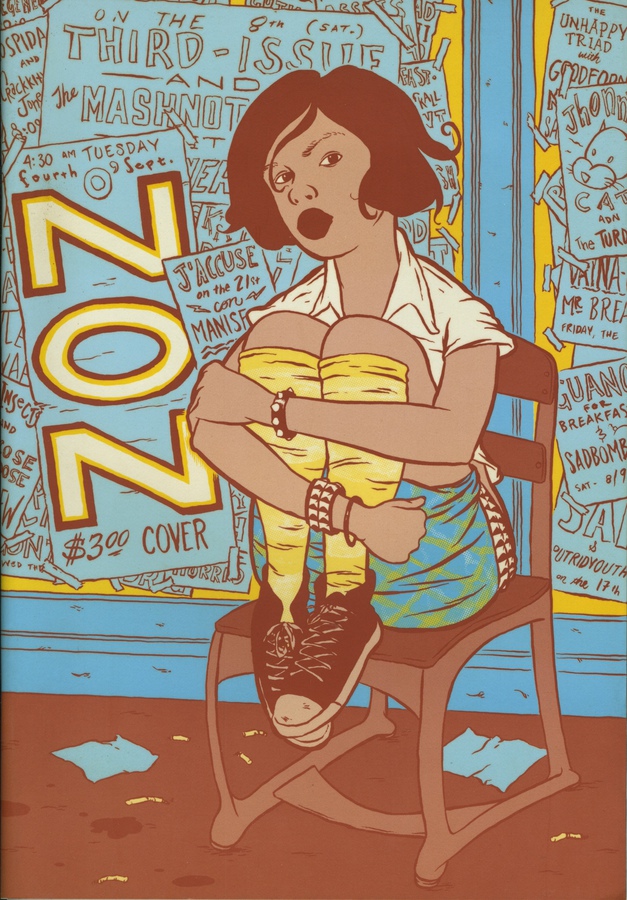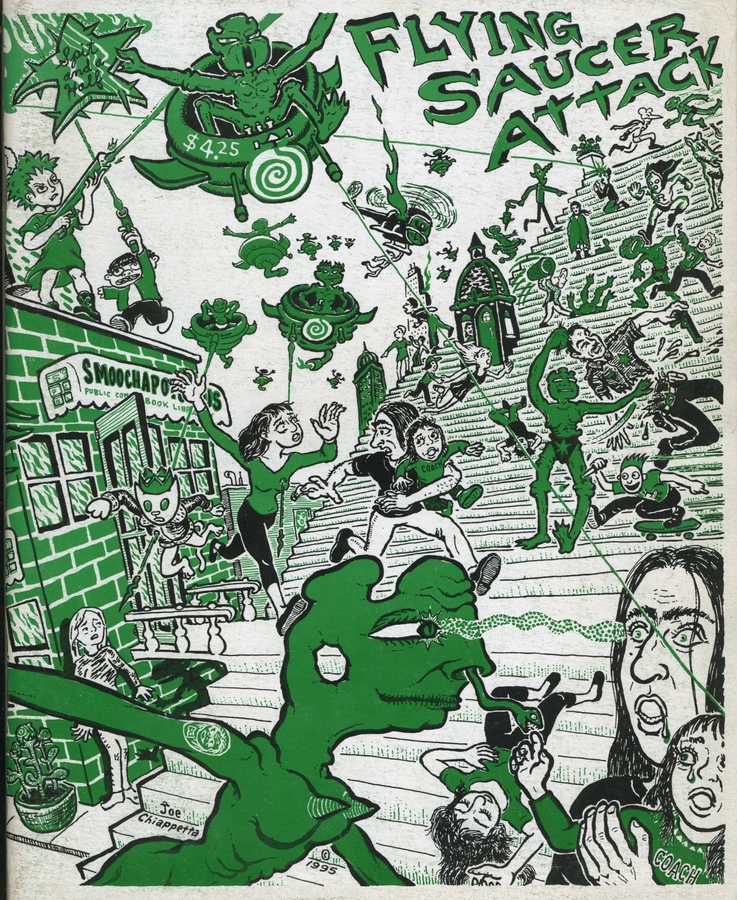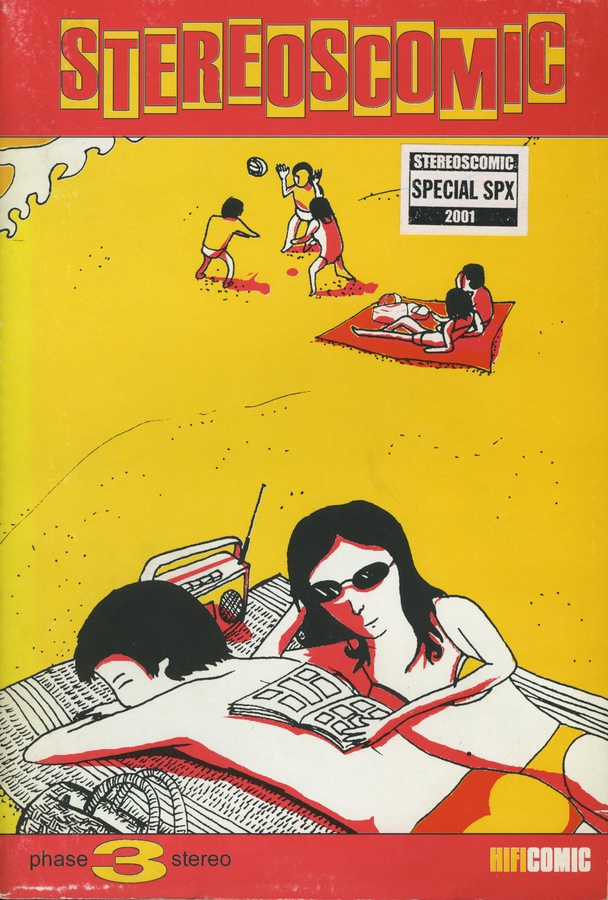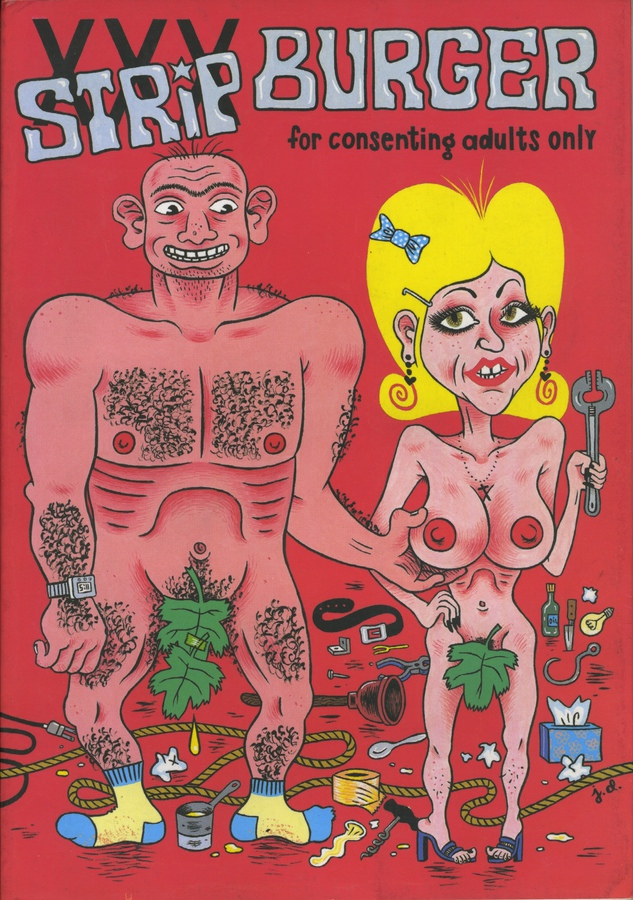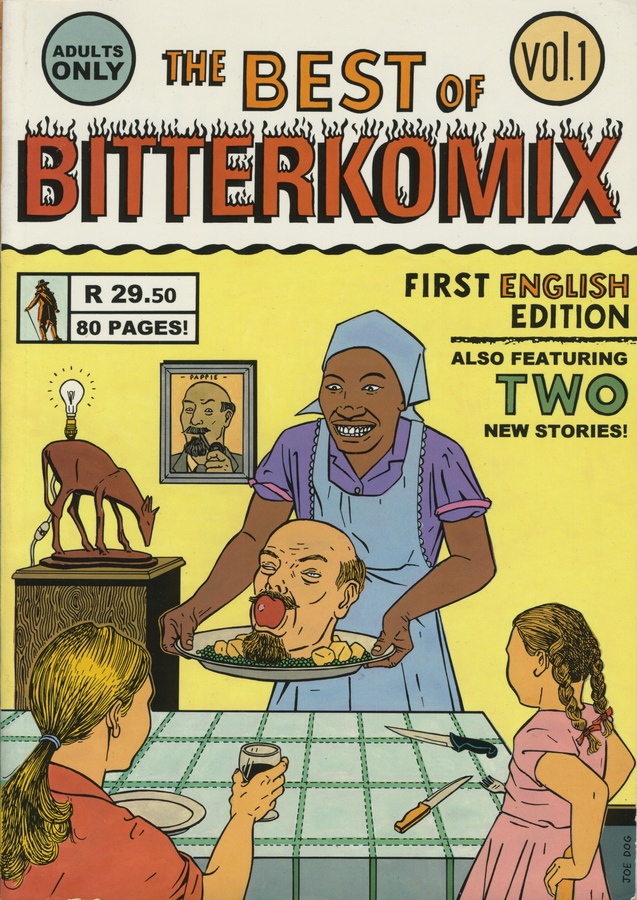Update for 23 September 2024
Item! While digging around the Internet Archive I discovered I’d uploaded two of my 1997 TRS review sheets, February and March. This is very fortuitous as I didn’t save print copies and the digital files I clearly had on my millennial grapefruit iMac are long lost. They add some much needed context to the archive, so if you happen to have a TRS sheet or two please send me a photo or scan so I can transcribe it (pete@peteashton.com).
Item! SCHNews was an info and news sheet for what I guess we’d call “radical woke activists” today that was quite transformative for me when I came across it. Five issues from 1998 survive in the collection, but they’re all available as PDFs on the SCHNews archive site. Notable because it’s back from the dead for one issue. I like how the “cram as much information onto an A3 sheet” format remains. Via Jon Higgs, and also check out Paul Raven’s reminiscing of what SCHNews meant to us kids back then.
RIP John Miller
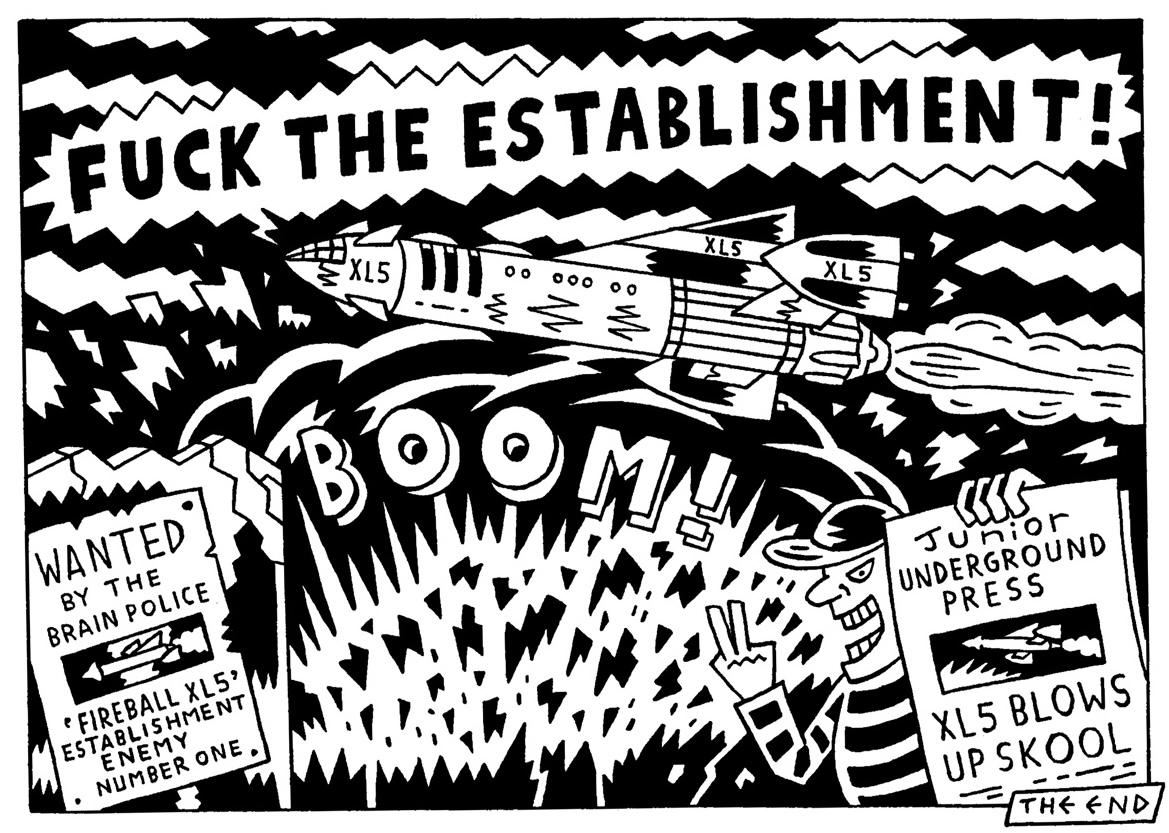
I discovered this week that John Miller died in January this year. John was a prolific contributor to many of the zines in this archive including my own (he did the cover to Vicious issue 2). I was a fan from the moment I first saw his work, probably in an issue of Atomic, and I was really happy when three collections of his art were published in the 2010s. There’s a lovely collective obituary here, mostly from friends from the Edinburgh comics scene, but as someone who knew him not in person but through the mail I’m grateful to Ed Pinsent for reminding me what it was like to get his letters.
I seem to be saying John’s letters were so vivid, they could affect a reader in many ways; the slice-of-life diaristic image would soon burn its way into my mind, and my senses would be stimulated by the tobacco smell of the letter – even before I opened the envelope, I knew it was from him. And of course there’s the visual impact of the hand-writing. If you’ve ever been fortunate enough to read a page of a Miller comic, you’ll know that his comics lettering style – completely unique and personal to him – was as sturdy and indelible as letterpress printing, or a magic typewriter whose keys could punch a letter into solid steel. His handwritten letters had just the same quality, the same strength of personality. As you read the lines, you could almost hear his speaking voice, inviting you into the conversation.
One of my greatest regrets is I didn’t keep the letters I received in the 1990s. There’s a symbiotic relationship between them and the zines – one wouldn’t happen without the other – and I’ve lost that.
Are we not zines?
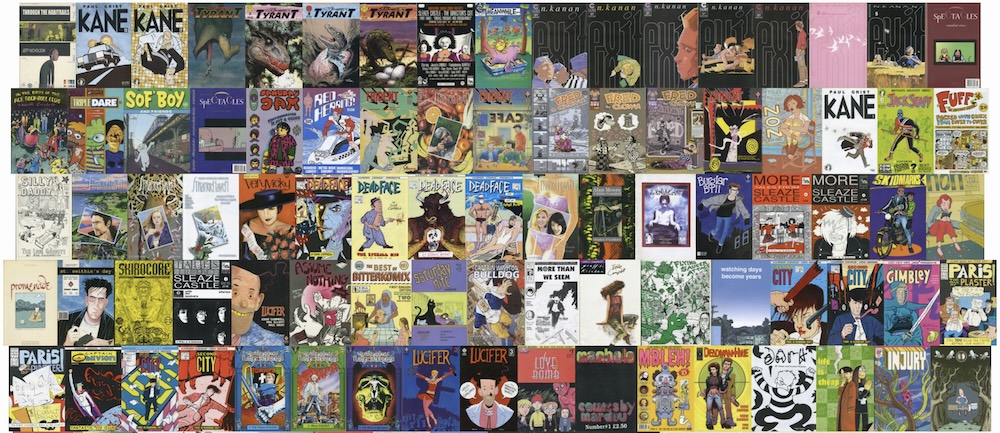
This upload is the first from the boxes of US comic book format zines, and it’s here that the definition of “zine” really starts to be stretched. If you look at these covers and think, “mate, most of these are comics, not zines” I’d probably agree with you. Many of them are targeted at comic shops, not zine networks, and a number of them aren’t even self-published. Including them threatens to make a mockery of the collection.
Before scanning I tried sorting them into piles of definitely / maybe / nope, but in the end decided to scan pretty much all of it. Back in the day I had way more comic books, most of which went to Oxfam in the 2010s, but for reasons that must have made sense at the time I decided to keep these comics and put them with the zines. Which means that, at this stage of the process, they are zines, so they’re going to be included.
In July, as I started going through the boxes, I put down some thoughts about how I might define a zine in a half-serious kind of way. Zines are by their nature impossible pin down, so attempting to do so is a fun exercise in thinking more broadly about what these damn things might mean. But one definition I felt held water was that zines are networks. There is something about a zine that transcends its physical manifestation. It is connected to, and in conversation with, other zines, sometimes explicitly through letters, reviews and articles within the zine itself, sometimes more intangibly by being something connections happen around.
This is why, for example, I’m keen to include certain (but not all) comics published by Harrier, Valkyrie and Trident as zines. They might not fit a strict definition of a zine but they are intrinsically connected to zine activity with an often explicit zine heritage. Or to put it another way, they are part of my zine activity, and if there’s anything that defines this collection it’s that.
In time I’m thinking of a sliding scale where each item is given some kind of zine purity score so you can filter the collection based on how strict a definition works for you. But for now it’s maximalism all the way.
Co-incidentally I got a copy of We Peaked At Paper, an oral history of British zines. I’ve not read it deeply yet but flicking through there seems to be a constant tension on how to best define a zine and where to draw the line. Amusingly they don’t include self published comics so most of what I have here wouldn’t count, and that’s fine! But I was amused to see, while skimming the interview with Stewart Home, his utter disinterest in these definitions. The definition comes in hindsight - at the time you did what you needed to do to achieve whatever it was you were trying to achieve. Sometimes that was by doing a zine, and sometimes it wasn’t.
Notable items in this upload
Collective efforts and pooling of resources tend to lead to better printing and production values, and so we’re seeing a number of anthologies appearing with the comic-sized zines. Jordan Crane’s NON, platforming his and his network’s work, was highly notable in the late 90s, raising a number of bars in design and content.
Flying Saucer Attack was one of a few one-off anthologies, this one based around a theme of alien invasion.
Meanwhile the English speaking comics world was continuing to discover Europe, where the medium was taken seriously as an art form and not just something for weirdos and degenerates (though plenty of our continental cousins fit that criteria) and the best way to sample zine-level work was in a translated anthology.
Stereoscomic was a big fat book out of France in 2001, targeted at the Small Press Expo in the USA.
Stripburger, the Slovenian anthology that is still going today, did a sex issue in 1999 - a sure fire way to get the attention of repressed anglophones. (Though the contents were pretty international - the cover is by Canadian Julie Doucet - co-incidentally a great example of someone whose work bridges the zines / comics / art worlds and fucks hard with any zine definition.)
Finally, not an anthology but a good example of how packaging up zine-type material can help it spread, Joe Dog’s Bittercomix was an underground comic from South Africa that I wound up selling the collection of. Like the work coming out of ex-Yugoslavian this was within a decade of seismic changes in the country and so comes across as a primal scream.
Added the following titles
- Sleaze Castle: The Director's Cut 0 by Terry Wiley & Dave McKinnon
- Space: Out Of This World 1 by Flix Gillett
- Space: Out Of This World 2 by Flix Gillett
- Happy 1 by Top Shelf
- Octobriana UKCAC'98 Ashcan by Stuart Taylor
- Stereoscomic by Alban Rautenstrauch
- Silly Daddy 11 by Joe Chiappetta
- Outlandish 2 by Christian Geoghegan
- Outlandish 1 by Christian Geoghegan
- Pop Culture & Two Minute Noodles 2 by Dillon Naylor
- XXX(Strip)burger by Forum Ljubljana
- Forelorn Funnies by Paul Hornschemeier
- Injury 2 by Buenaventura Press
- Life Is Cheap by DeeVee
- Dark 3 by Anna & Karen Rubins
- Deadman & Hyde by Charaydis
- MBLEH! 2 by Bob Byrne
- Manhole 1 by Mardou
- Love Bomb 1 by Abaculus
- Lucifer 3 by Trident
- Lucifer 2 by Trident
- The Adventures of Luther Arkwright 6 by Valkyrie Press
- The Adventures of Luther Arkwright 4 by Valkyrie Press
- The Adventures of Luther Arkwright 5 by Valkyrie Press
- Second City 3 by Harrier
- Second City 4 by Harrier
- Captain Oblivion 1 by Harrier
- Paris! The Man of Plaster 5 by Harrier
- Paris! The Man of Plaster 6 by Harrier
- More Tales from Gimbley 1 by Harrier
- Second City 1 by Harrier
- Second City 2 by Harrier
- Watching Days Become Years 1 by Sparkplug
- Flying Saucer Attack by Jerome Gaynor
- Graffiti Kitchen by Eddie Campbell
- More Than We Seem 4 by Dave West
- The Greatest Adventures of Captain Winston Bulldog by Jason Cobley
- Saturday Nite 1 by Anson Jew
- The Best of Bitterkomix by Joe Dog
- Assume Nothing by Slab-O-Concrete
- Lucifer by Trident
- Tales from Sleaze Castle 3 by Terry Wiley & Dave McKinnon
- Skirocore 9 by Skirocore
- St Swithin's Day by Trident
- Vauxhall 3 by La Comedié Illustrée
- Non 2 by Jordan Crane
- Skidmarks 3 by Tundra
- More Tales from Sleaze Castle 5 by Terry Wiley & Dave McKinnon
- More Tales from Sleaze Castle 6 by Terry Wiley & Dave McKinnon
- Burglar Bill 1 by Trident
- The Man Who Learned To Fly by John Scotcher
- Snakes & Ladders by Eddie Campbell
- Strangehaven 4 by Gary Spencer Millidge
- Deadface 4 by Harrier
- Deadface 3 by Harrier
- Deadface 2 by Harrier
- Deadface 1 by Harrier
- Very Vicky 1 by Meet Danny Ocean
- Strangehaven 8 by Gary Spencer Millidge
- Strangehaven 2 by Gary Spencer Millidge
- Strangehaven 7 by Gary Spencer Millidge
- Silly Daddy: The Long Goodbye by Joe Chiappetta
- Fluff 4 by Jeffrey Lewis
- Jack Staff 1 by Paul Grist
- Kane 1 by Paul Grist
- Non 3 by Jordan Crane
- Trident 8 by Trident
- Fred The Clown 2 by Roger Langridge
- Fred The Clown 1 by Roger Langridge
- Fred The Clown 4 by Roger Langridge
- Trident 7 by Trident
- Strangehaven 5 by Gary Spencer Millidge
- Trident 4 by Trident
- Red Herring 1 by Will Potter
- Samurai Jam 1 by Slave Labour Graphics
- Spectacles 1 by Alternative Press
- Sof' Boy 2 by Drawn & Quarterly
- Triple Dare 1 by Alternative Press
- In the days of the Ace Rock'n'Roll Club by Fantagraphics
- Spectacles 2 by Alternative Press
- Exit v1 5 by Nabiel Kanan
- Exit v1 8 by Nabiel Kanan
- Exit v2 5 by Caliber
- Exit v2 1 by Caliber
- Exit v2 2 by Caliber
- Exit v2 3 by Caliber
- Exit v2 4 by Caliber
- Meanwhile... by Crow Comics
- Sleaze Castle: The Director's Cut 3 by Terry Wiley & Dave McKinnon
- Tyrant 1 by Steve Bissette
- Tyrant 3 by Steve Bissette
- Tyrant 2 by Steve Bissette
- Tyrant 4 by Steve Bissette
- Kane 12 by Paul Grist
- Kane 13 by Paul Grist
- Through the Habitrails by Jeff Nicholson
